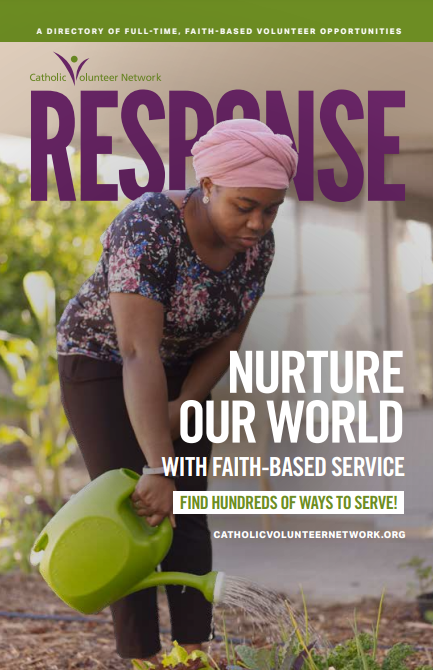Almost a year and a half ago, I remember going to the Catholic Volunteer Network blog page and reading “A Day in the Life of a Franciscan Lay Missioner—Nora Pfieffer”. I never would have guessed that I would be asked the following year to write my own “A Day in the Life” as a representative of Franciscan Mission Service and how different my typical day in Cochabamba, Bolivia would look compared to one of the other missioners in my community! As other missioners across the world have previously stated, not one day in mission is the same. However, I will do my best to provide insight into a more typical Wednesday.
 Every morning, I wake up at around 7:40 to boil my water on the stove. Our stoves are powered by natural gas and require a match or a lighter to ignite the burner. During the 10-15 minutes it takes to boil, I hop in the shower to get ready for the day.
Every morning, I wake up at around 7:40 to boil my water on the stove. Our stoves are powered by natural gas and require a match or a lighter to ignite the burner. During the 10-15 minutes it takes to boil, I hop in the shower to get ready for the day.
After I get out of the shower, drink my coffee, and eat my oatmeal, I take 15-20 minutes to meditate and do yoga in my living room. This is a very important part of my day because it helps me to center myself and prepare myself for another busy day at the short-term shelter for adolescent girls.

Up until June, I would take a “micro” to and from the shelter every morning and evening. Because traffic is so heavy downtown, I would leave no later than 8:10 to get to my service site by 9am. Most days, I would bring a book or a notebook to pass the time (a very important thing to remember when living in Cochabamba, Bolivia!)
 Now that I live in the city, I walk each day to the shelter. On my way to service, I always say hello to a few of the local business ladies who I walk past each day and the zapatero (the shoe-repairman) who is a great help to the shelter. I may not know their names and they may not know mine, but our presence and our remembrance of one another makes all the difference each day 🙂
Now that I live in the city, I walk each day to the shelter. On my way to service, I always say hello to a few of the local business ladies who I walk past each day and the zapatero (the shoe-repairman) who is a great help to the shelter. I may not know their names and they may not know mine, but our presence and our remembrance of one another makes all the difference each day 🙂

Each morning when I enter the doors of Madre de Dios, I am brightly greeted by these beautiful faces and the most wonderful voices saying “Señorita Kipsy. Señorita Kipsy! ¡Mi besito! ¡Mi besito!” How blessed am I to receive this grand welcoming each and every day?
 After receiving hugs and kisses from each of the kids downstairs, I walk up the stairs to my sala—the classroom where I help to teach, mentor, and spend time with the adolescent girls who are more stable and will be staying at the shelter for a longer period of time. We split the girls into two groups in the morning. We start with reading each morning for half an hour and then work on homework. I am responsible for creating lesson plans for each of the girls, as each of them are at a different level, and fulfilling these lesson plans while the girls are at the shelter.
After receiving hugs and kisses from each of the kids downstairs, I walk up the stairs to my sala—the classroom where I help to teach, mentor, and spend time with the adolescent girls who are more stable and will be staying at the shelter for a longer period of time. We split the girls into two groups in the morning. We start with reading each morning for half an hour and then work on homework. I am responsible for creating lesson plans for each of the girls, as each of them are at a different level, and fulfilling these lesson plans while the girls are at the shelter.  At Noon, I walk back to my apartment to cook and enjoy a short break. Here in Bolivia, we typically have a two hour lunch period between the hours of 12 & 2. I am thankful for this time because it allows me to recuperate from the morning with the girls, cook, clean the apartment, and take a little nap before heading back to the shelter for the second part of the day.
At Noon, I walk back to my apartment to cook and enjoy a short break. Here in Bolivia, we typically have a two hour lunch period between the hours of 12 & 2. I am thankful for this time because it allows me to recuperate from the morning with the girls, cook, clean the apartment, and take a little nap before heading back to the shelter for the second part of the day.
 In the afternoon on Wednesdays, my supervisor Hermana Teresa teaches religion to the girls. On this specific day, they were acting out the story of the washing of the feet. While Hermana is teaching religion, I prepare the room for the next activity—Meditation.
In the afternoon on Wednesdays, my supervisor Hermana Teresa teaches religion to the girls. On this specific day, they were acting out the story of the washing of the feet. While Hermana is teaching religion, I prepare the room for the next activity—Meditation.  This past month, I started introducing the girls to the beauty of meditation each Wednesday afternoon. This is the room that I was given to use during the afternoon. After setting up the room and putting a big carpet on the wood floor, I prepare the music so that the girls can enter. I always have the girls line up quietly outside of the door before coming into the room. I have been teaching them that this room is a sacred space in which we are quiet and respectful. Some days with adolescent girls, it can be difficult to silence the giggles, but they are getting better each week. I try to focus on important issues in each meditation, such as body image, open hearts, and good relationships.
This past month, I started introducing the girls to the beauty of meditation each Wednesday afternoon. This is the room that I was given to use during the afternoon. After setting up the room and putting a big carpet on the wood floor, I prepare the music so that the girls can enter. I always have the girls line up quietly outside of the door before coming into the room. I have been teaching them that this room is a sacred space in which we are quiet and respectful. Some days with adolescent girls, it can be difficult to silence the giggles, but they are getting better each week. I try to focus on important issues in each meditation, such as body image, open hearts, and good relationships.  When I get home from the shelter at about 5:30, I turn on music and start working on projects that I can use with the girls. I like to try out every art project so that the process is much smoother when I present it to the girls. This was an etching project I did at home before taking the idea to the shelter. I used materials that we already had in the room, including recycled cardboard! I also spend time preparing various worksheets for the girls using my love for creativity and my love for psychology. The above worksheet is one that I created based upon a series of “feelings” books that we have in our bookcase. This one was specifically made for the book on courage and helps the girls to comprehend what they read and to also apply these feelings to situations in their own lives.
When I get home from the shelter at about 5:30, I turn on music and start working on projects that I can use with the girls. I like to try out every art project so that the process is much smoother when I present it to the girls. This was an etching project I did at home before taking the idea to the shelter. I used materials that we already had in the room, including recycled cardboard! I also spend time preparing various worksheets for the girls using my love for creativity and my love for psychology. The above worksheet is one that I created based upon a series of “feelings” books that we have in our bookcase. This one was specifically made for the book on courage and helps the girls to comprehend what they read and to also apply these feelings to situations in their own lives.
 After a long day (and if I’m not too tired!) I may be lucky enough to spend a little time with my good Bolivian friends. We usually spend time talking and relaxing after our long days! After that, I return home and fall right asleep. It is important for me to get 7-8 hours so that I’m fresh in the morning 🙂
After a long day (and if I’m not too tired!) I may be lucky enough to spend a little time with my good Bolivian friends. We usually spend time talking and relaxing after our long days! After that, I return home and fall right asleep. It is important for me to get 7-8 hours so that I’m fresh in the morning 🙂 



 Thousands of faith-based service opportunities can be at your fingertips with the RESPONSE. Download the latest edition today!
Thousands of faith-based service opportunities can be at your fingertips with the RESPONSE. Download the latest edition today!
